
Tire Wear
Tire wear and damage are serious issues that can cause your vehicle trouble. Find out how to recognize potential problems and take care of them if they do occur.
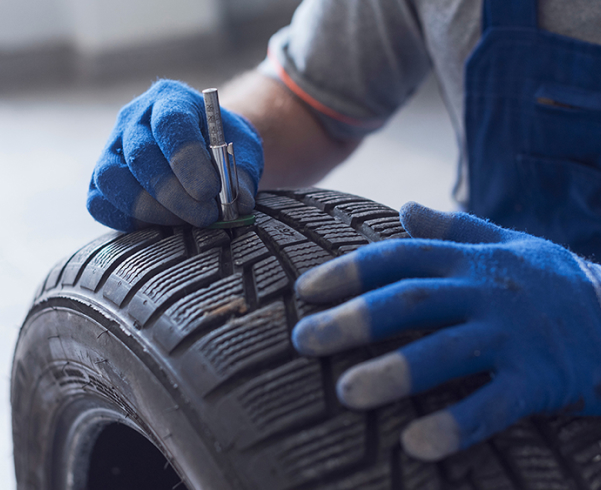
Causes:
- Over inflation.
- Rim width is too narrow (tires and rims do not fit each other).
- Rear wheel drive vehicles centralize load bearing on rear tires.
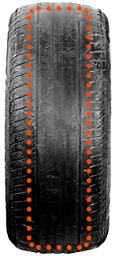
Impact on Tires:
- Tread center wears quicker than shoulders, reducing tire life.
- Enhances tire rigidity but decreases cut resistance and comfort level.
- Likely to cause sudden tire blowouts due to foreign impact.
- Increases braking distance, weakens grip, decreases safety.
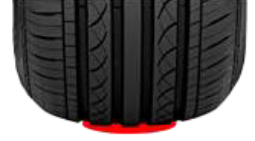
Solutions:
Deflate the Tire:
use a tire pressure gauge to deflate the tire until the pressure reaches the recommended level set by the vehicle manufacturer. The recommended tire pressure can be found in various areas of the vehicle such as: car owner’s manual, driver’s side door, and fuel filler door.
The pressure should be checked after the tire cools down (at least 3 hours after stopping or traveling within 2 km).
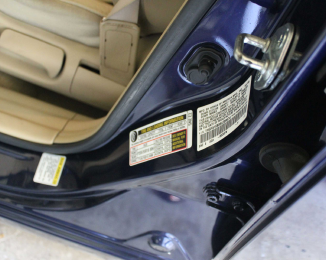
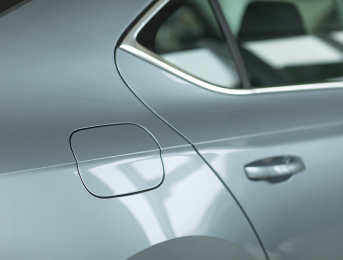
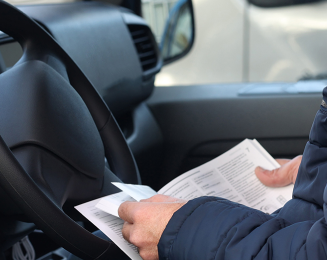



What Causes Rapid Shoulder Wear on One Side?
Causes:
- Incorrect camber angle or toe.
- In order to achieve maximum tire life, please check the suspension system and perform proper wheel alignment.

Causes:
- Under inflated tires or overloading.
- Frequent braking or sharp turns.
- Tire and rim do not match or rim is too wide.
Impact on Tires:
- Inner and outer shoulder wears quickly, reducing tire life.
- Leads to higher tire temperature, reduces tire durability, and causes accidents.
- Increases rolling resistance and fuel consumption.
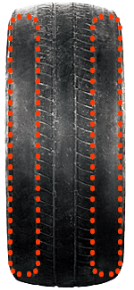
Under inflated tires – tire shoulder bears most of the load.

Solutions:
- Inflating to the proper tire pressure (measured with a tire pressure gauge). The recommended tire pressure can be found in various areas of the vehicle such as: car owner’s manual, driver’s side door, and fuel filler door.
- Make sure tire and rim fit each other.
- Good driving habits, avoid abrupt stops and acceleration.
The pressure should be checked after the tire cools down (at least 3 hours after stopping or traveling within 2 km).






What Causes Irregular Tread Wear?
Causes:
- Vehicle anti-lock braking system (ABS) fails
- Brake or tire lock
- Loose bearings or components
- Improper wheel balancing
- Deformed or off centered rims
- Chemical contamination
Impact on Tires:
- Affects Tire Life
Solutions:
- Please perform tire balancing and wheel alignment checks.
- Please perform suspension or steering system checks.

Main Causes:
- Poor vehicle suspension system will cause the tire surface to appear uneven and rough. In severe cases, the tread pattern will appear feathery.
Common Causes:
- Incorrect toe setting
- Poor vehicle suspension system
Solutions:
- Please perform tire balancing and wheel alignment checks.
- Please perform suspension or steering system checks.
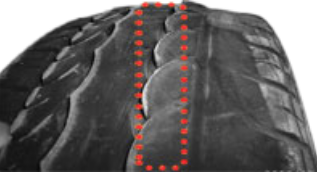
Results in Rapid Wear on Front Axle Tires:
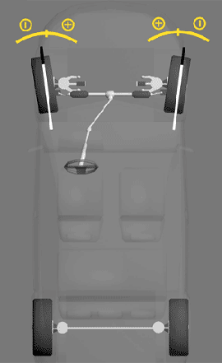
Positive Camber
Large positive camber will cause feathering
and outer shoulder wear.
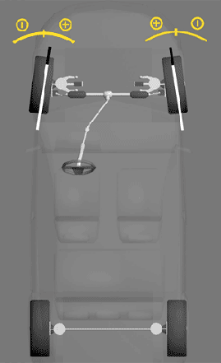
Negative Camber
Large negative camber will cause feathering
and inner shoulder wear.
Impact on Tires:
Affects tire life.
Solutions:
Vehicle needs to perform wheel alignment and suspension system checks.
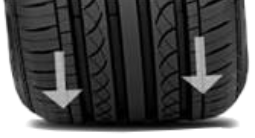
Factors That Affect Tire Life:
- Driving habits and styles
- Tires paired with correct vehicle model
- Different road surfaces
- Vehicle and tire maintenance
- Improper wheel alignment
- Braking system error
Impact on Tires:
- Affects tire life.

Solutions:
- To achieve maximum tire life, please check the suspension system and perform proper wheel alignment.
Causes:
- Driving with insufficient air pressure for long periods
- Tread cuts, punctures, or improper repairs
When tread separation occurs, replace tires immediately.

What Is the Appropriate Tire Pressure for My Car?
The recommended tire pressure for each vehicle is set by the car manufacturer and can be found in various areas of the vehicle such as: car owner’s manual, driver’s side door, fuel filler door, and etc.
Vehicle load and tire pressure is interrelated. For larger loads, please increase the tire pressure.

Recommended tire pressure is set by car manufacturer. The tire pressure label can be found on the driver’s seat door.
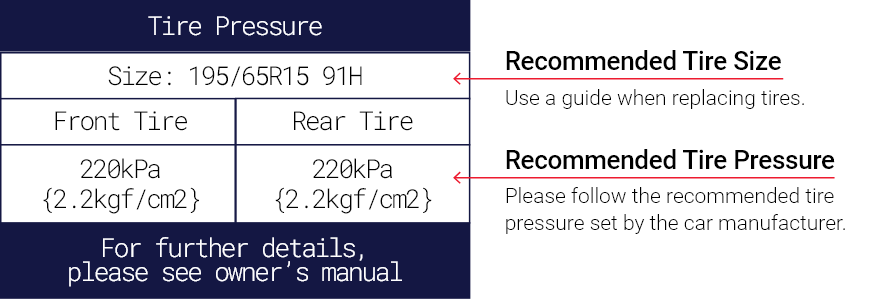
Please check the tire pressure when the tire is cooled to obtain a more accurate measurement. In other words, when the vehicle has been traveling for less than 2 km or parked for at least 3 hours.
When the tire crown exposes steel cords, the tires should be replaced immediately.
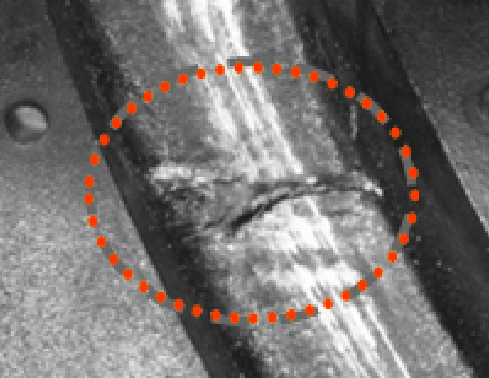
Causes:
Internal tire structural damage.
When driving, the tire shoulder or sidewall is impacted by foreign objects (e.g. potholes and curbs) which causes the tire casing cord to break. The internal tire pressure combined with the weakness in the sidewall causes bulges to form at the area of weakness.
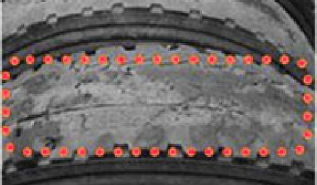
How to Prevent Tire Bulges:
- When mounting tires, visit a professional tire shop that uses professional equipment and procedures
- Avoid driving on poor road conditions for long periods and reduce speed on poor roads to help minimize the impact of foreign objects (e.g. potholes)
- Try not to hit obstacles when going on the curb or parking
- Develop good tire maintenance practices such as performing regular tire pressure checks to make sure proper pressure is used
Causes:
- Scratched by sharp objects (curb, stones, metal fragments, and etc.)
Solutions:
- Avoid road obstructions
- Go to the nearest service center to repair tire scratches and avoid further damage
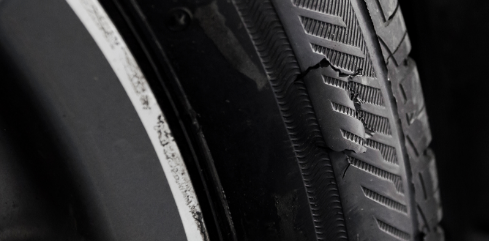
Prolonged exposure to direct sunlight, high temperature, heat, and generators will deteriorate tires. At the same time, oil, gasoline, and other substances will also cause deterioration.
Parking the vehicle outside for long periods, hinders anti-aging properties from being released.
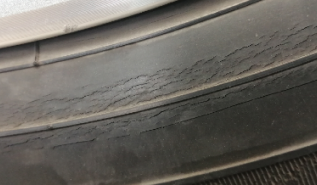
Causes:
When traveling on the road, sharp objects impact the tire crown and cause the steel belt to break and corrode leading to a deformed tire casing and abnormal tread wear.
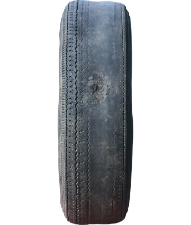
Directional Tread Pattern:
- Usually has a V-shaped pattern and sidewalls are marked with tire rotation direction.
- Must be mounted in the same rotation direction marked on the sidewalls.
- If all four tires are the same size, directional tires can only be rotated vertically (front-back).

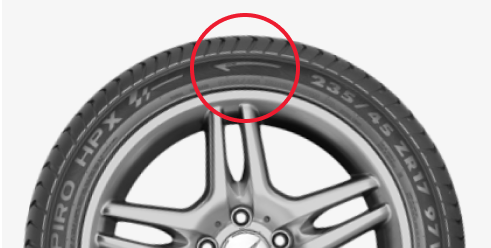
Must Install According to the Direction of the
Arrow on the Sidewall
Symmetrical Tread Pattern:
- Usually has a continuous rib or block design with the same features on both inner and outer tread.
- Wavy pattern.
- If all four tires are the same size, symmetrical tires can be rotated diagonally, horizontally, or vertically.
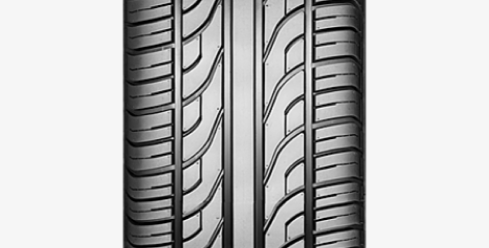
Asymmetric Tread Pattern:
- Have unique patterns on both sides of the tread. Outer tread usually has larger grooves for better water dispersion and increased wet handling while inner tread usually has smaller grooves to increase contact area and improve grip.
- Sidewall markings identifying inner and outer side of tire.
- If all four tires are the same size, asymmetric tires can be rotated the same way as symmetrical tires with care given to the inner and outer tire markings.
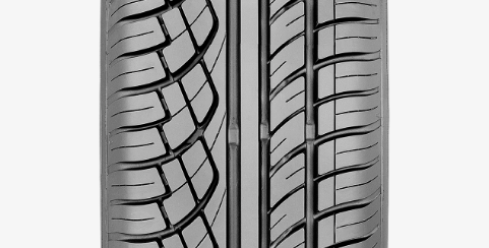

Sidewall Label Distinguishes Inner and Outer
Side of the Tire
Causes:
Tire reaches wear limit and must be replaced when the tread depth is 1.6 mm or leveled with the TWI (Tread Wear Indicator).
Solutions:
Take your vehicle to the nearest Giti Professional Service Center for a tread depth inspection.



Hi, how can we help?
Frequently Asked Questions
You can download a product brochures from any of our stores, visit a store near you.
You can locate stores near you, here(not available).
You can also download brochure on each product detail page, sample here.
Locate GT Radial stores near you using our Dealer Locator.
If you are not sure of what size is installed on your vehicle, please confirm first by checking the sidewall.
Here is a simple guide of how to check your tire size.

You can shop tires by size here,
Please contact see Warranty page for warranty information.
Each tire has designated speed rating. Click here to see Speed Rating Guide.
Email Us
You may also email your questions by using our form
Need Assistance?
For All Inquiries, please talk to our Customer Service
+65 6249 5370 Phone Support Hours:
Monday - Friday : 7:00am - 9:00pm CST
If you have questions with the website? Please email our Technical Support
You may visit GT Radial dealers near your location
Find DealersGT Radial Tire Warranty Information
Thank you for trusting in GT Radial. With the proper care and maintenance, we believe that your GT Radial tires will serve you well while you Experience the Performance.
To show you that we trust in our tires as much as (if not more than) you, GT Radial offers the following warranties:
-
AGT Radial 5-Year Limited Time and Limited Mileage Warranty
All our tires come with a 5-year Limited Time and Limited Mileage Warranty, under which your tires are covered against manufacturing faults. Upon falling within the terms of the warranty, your tires will be replaced free of charge.
You may read the full Terms & Conditions here.








